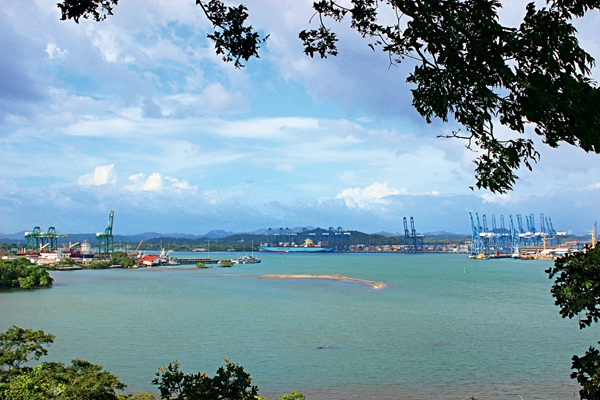Panama – Connecting China with Latin America
China Today,October 30, 2017 Adjust font size:
Free Trade Pact Anticipated
Panama is the second Central American country to establish diplomatic relations with China. The first was Costa Rica in 2007. One of the first issues Costa Rica and China addressed was the signing of a free trade agreement (FTA), which was finalized in 2011. Therefore, there are many voices in Panama calling for FTA negotiations with China.
Panama’s Commerce and Industry Minister Augusto Arosemena has announced that a delegation from his country will travel to China to pave the way for the possible signing of the FTA. In this regard, the Vice President of the National Council of Private Enterprises of Panama, Severio Sousa, held that an FTA would not only put Panama on a par with other countries in the region that have treaties of this type, but also strengthen the Colón Free Zone’s position as a hub for the redistribution of Chinese goods in the American continent. However, it is not the only project that Panama has in mind.

The famous Panama Canal that connects the Atlantic Ocean to the Pacific Ocean. Photos by Katiuska Hernández
“After the signing of the Joint Communiqué (on the establishment of diplomatic relations), we have had corresponding meetings on the different agreements and cooperation that we wish to foster,” said Any Lam Chong Leon. The Trade Development Office that she formerly headed has become the Embassy of the Republic of Panama in the People’s Republic of China. “In addition to the FTA, there are many projects that we want to strengthen and implement with China, for example, a maritime agreement as well as agreements in the commercial, technological, educational, cultural, and tourist fields, among others,” she added. On August 22, the President of Panama, Juan Carlos Varela, appointed Francisco Carlo Escobar Pedreschi as Panama’s first ambassador to China.
According to figures from the Chamber of Commerce, Industries and Agriculture of Panama (CCIAP), which cover more than 1,600 companies from 15 economic sectors, Panama exported US $50.9 million worth of goods to China in 2016, an increase of 22.9 percent over the previous year. The main exports were copper waste and scrap, aluminum waste, crustaceans, logs and pre-treated wood, coffee, and coffee substitutes, among others.
According to Sun Jiwen, spokesman of China’s Ministry of Commerce, Panama is the country’s largest trading partner in Central America, with bilateral trade amounting to US $6.38 billion in 2016. China’s direct investment in Panama is more than US $230 million and there are about 30 Chinese companies operating in that country in sectors such as maritime transport, telecommunications, finance, and infrastructure.
Within Panama, one can find financial institutions such as the Bank of China, and multinationals like the telecommunications company Huawei, the oil company Sinopec, the construction firm China Harbor Engineering Co., Ltd., and China State Construction Engineering Corporation. The latter two currently aspire to enter a bid to construct Line 3 of the Panama Metro.
Wang Weihua, former Chinese representative for Panama-China Trade Development Office and now charge d’affaires of the Chinese embassy in the country, said at a press conference that the Chinese government’s trade priorities include the signing of cooperation agreements in the maritime, tourism, and agro-export sectors. The country also plans to sign a phytosanitary agreement to allow Panama’s seafood, tropical fruits, and beef to enter the Chinese market, thereby reaching 1.3 billion potential consumers.
The Panamanian tourism sector also expects that the establishment of diplomatic relations will mean the arrival of Chinese investments in infrastructure, theme parks, highways, and hotels, as pointed out by the Minister of Tourism of Panama, Gustavo Him. In that sense, Panama is already developing a policy to attract Chinese tourists. “The Chinese market is expanding. I have already had meetings with Chinese operators and I have been looking for chances to open charter flights. Cooperation in this aspect is now more important with the establishment of diplomatic relations,” Minister Him told the local press.